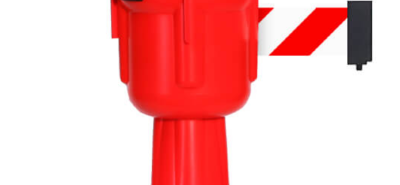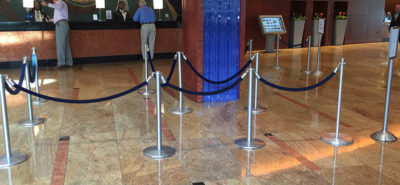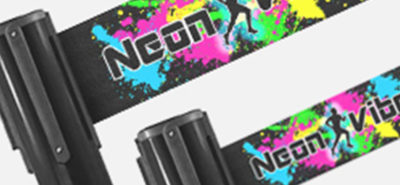Promoting Inclusivity and Ease of Access in Public Environments
Promoting Inclusivity and Ease of Access in Public Environments
In today’s diverse and inclusive society, ensuring the accessibility of public spaces to individuals of all abilities has become paramount. This encompasses the establishment of effective crowd management protocols to ensure safety, order, and convenience for everyone. Within this blog post, we will delve into the significance of advancing inclusivity and accessibility in public areas by implementing crowd control solutions tailored to the needs of those with disabilities and distinct requirements.
Public spaces are designed to serve the community by offering recreational, cultural, and social opportunities. However, without proper crowd management measures, these spaces can inadvertently create hurdles and difficulties for individuals with disabilities or limited mobility. By embracing crowd control solutions that prioritize accessibility and inclusivity, public spaces can extend equal opportunities and ensure a positive experience for all visitors.
Clear Pathways for All
A fundamental consideration for enhancing accessibility revolves around establishing unobstructed pathways within public areas. Effective crowd control solutions contribute to this objective by crafting organized and easily navigable environments. For instance:
Extended Belt Stanchions: Stanchions equipped with extended retractable belts facilitate broader walkways to accommodate wheelchair users and those with mobility aids. This guarantees unhindered passage and enables effortless movement throughout the space.
Evident Signage and Directional Indicators: Distinct and conspicuous signage, coupled with directional indicators, aid individuals with visual impairments or cognitive challenges, allowing them to independently and confidently traverse the public area.
Ensuring Unobstructed Entrances
A vital facet of accessibility entails guaranteeing barrier-free entrances to public spaces. Crowd control products such as stanchions, barrier gates, or wall mounts play a pivotal role in attaining this objective. These versatile solutions provide means to swiftly and conveniently establish entrances in any section within a queue or barricade.
Stanchions: Stanchions offer a pliable and adaptable approach to crafting entrances. With retractable belts, ropes, or chains, they can be configured in diverse layouts to direct visitors and create clear entry points. Stanchions are ideal for shaping orderly queues or demarcating specific zones within a space. Their portable nature allows effortless repositioning to cater to evolving needs.
Barrier Gates: Barrier gates present a more robust and secure option for entrances. These resilient barriers can be positioned at access points to regulate the flow of individuals while upholding crowd control. Barrier gates are frequently employed in venues like airports, stadiums, or concert halls, where efficient management of large crowds is imperative. With their sturdy build and locking mechanisms, they ensure controlled access and heighten security.
Wall Mounts: Wall mounts provide a space-efficient solution for restricting access in confined areas. By affixing retractable belt barriers directly to walls or fixed structures, they eliminate the necessity for freestanding stanchions or barriers. This is especially advantageous in narrow corridors or hallways with limited floor space. Wall mounts seamlessly integrate with the surroundings while maintaining effective crowd control by sealing off restricted areas.
Prioritizing Special Queues
To cater to the distinct requirements of certain individuals, such as the elderly, pregnant women, or those with disabilities, public spaces can establish priority queues. This contributes to their comfort and convenience:
Dedicated Queue Lanes: Designated queue lanes for individuals with special needs ensure prompt assistance and reduce their waiting times. These lanes can be clearly marked and managed using stanchions and signage.
Accessible Waiting Zones: Providing accessible waiting areas with seating options, tactile guidance, and other amenities caters to the comfort of individuals with disabilities or mobility limitations.
Enhancing Safety and Comfort
Crowd control solutions not only bolster accessibility but also contribute to safety and comfort for all visitors:
Barrier Systems: Employing barricades or stanchions with interconnected retractable belts establishes distinct boundaries and prevents overcrowding, thereby ensuring a safer environment. This enables visitors to navigate public spaces without feeling overwhelmed.
Queue Management Systems: Implementing efficient queue management systems, such as electronic call-forward mechanisms or virtual queuing, can curtail wait times and minimize physical queues, ultimately enhancing comfort and accessibility.
In Conclusion
Advancing accessibility and inclusivity in public spaces is pivotal to guaranteeing equal opportunities and experiences for all individuals. By prioritizing crowd control solutions that cater to the diverse needs of visitors, public spaces can create an environment that is secure, convenient, and inviting for everyone. Whether through unobstructed pathways, barrier-free entrances, prioritized queues, or safety measures, crowd control solutions play a pivotal role in championing accessibility and inclusivity. Let us collectively strive to transform our public spaces into more accessible and enjoyable havens for all, embracing diversity and equal access principles to foster a more inclusive society.
For further insights into products enhancing accessibility within queues, kindly refer to our assortment of belt stanchions.













LEAVE A COMMENT